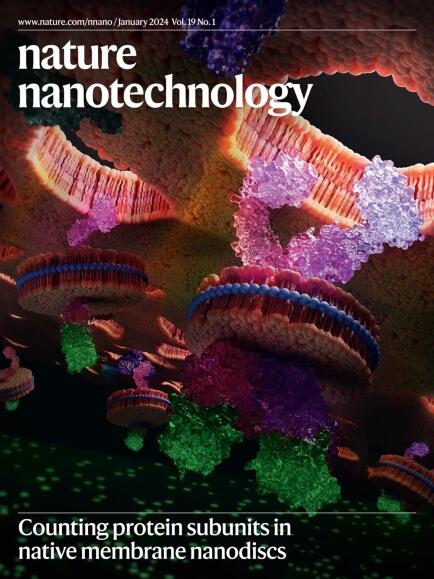面内铁电拓扑的按需纳米工程
IF 38.1
1区 材料科学
Q1 MATERIALS SCIENCE, MULTIDISCIPLINARY
引用次数: 0
摘要
铁电纳米域的分层组合(即所谓的超域)可以呈现出奇特的形态,从而产生不同的行为。可靠地控制这些超域对于实现具有所需功能特性的状态至关重要。在这里,我们利用偏置原子力显微镜尖端揭示了铁电模型 Pb0.6Sr0.4TiO3 的超开关机制,即平面内超域的开关。我们证明了超域成核和稳定过程主导了写入过程。复杂的扫描探针轨迹能够按需形成复杂的中心发散、中心收敛和通量闭合极性结构。相关的压电响应力显微镜和光学光谱证实了新兴结构的拓扑性质和可调性。在铁性材料中进行精确而多用途的纳米光刻,以及所生成结构的稳定性(也通过相场建模进行了验证),表明了可靠的多态纳米器件架构的潜力,从而为神经形态电路应用中可调谐拓扑结构的创建提供了另一条途径。本文章由计算机程序翻译,如有差异,请以英文原文为准。


On-demand nanoengineering of in-plane ferroelectric topologies
Hierarchical assemblies of ferroelectric nanodomains, so-called super-domains, can exhibit exotic morphologies that lead to distinct behaviours. Controlling these super-domains reliably is critical for realizing states with desired functional properties. Here we reveal the super-switching mechanism by using a biased atomic force microscopy tip, that is, the switching of the in-plane super-domains, of a model ferroelectric Pb0.6Sr0.4TiO3. We demonstrate that the writing process is dominated by a super-domain nucleation and stabilization process. A complex scanning-probe trajectory enables on-demand formation of intricate centre-divergent, centre-convergent and flux-closure polar structures. Correlative piezoresponse force microscopy and optical spectroscopy confirm the topological nature and tunability of the emergent structures. The precise and versatile nanolithography in a ferroic material and the stability of the generated structures, also validated by phase-field modelling, suggests potential for reliable multi-state nanodevice architectures and, thereby, an alternative route for the creation of tunable topological structures for applications in neuromorphic circuits. A biased atomic force microscopy tip can write complex in-plane polar topologies in a model ferroelectric Pb0.6Sr0.4TiO3 by means of a smart scan path design. Hence, on-demand generation, reading and erasing of tunable topologies is possible.
求助全文
通过发布文献求助,成功后即可免费获取论文全文。
去求助
来源期刊

Nature nanotechnology
工程技术-材料科学:综合
CiteScore
59.70
自引率
0.80%
发文量
196
审稿时长
4-8 weeks
期刊介绍:
Nature Nanotechnology is a prestigious journal that publishes high-quality papers in various areas of nanoscience and nanotechnology. The journal focuses on the design, characterization, and production of structures, devices, and systems that manipulate and control materials at atomic, molecular, and macromolecular scales. It encompasses both bottom-up and top-down approaches, as well as their combinations.
Furthermore, Nature Nanotechnology fosters the exchange of ideas among researchers from diverse disciplines such as chemistry, physics, material science, biomedical research, engineering, and more. It promotes collaboration at the forefront of this multidisciplinary field. The journal covers a wide range of topics, from fundamental research in physics, chemistry, and biology, including computational work and simulations, to the development of innovative devices and technologies for various industrial sectors such as information technology, medicine, manufacturing, high-performance materials, energy, and environmental technologies. It includes coverage of organic, inorganic, and hybrid materials.
 求助内容:
求助内容: 应助结果提醒方式:
应助结果提醒方式:


